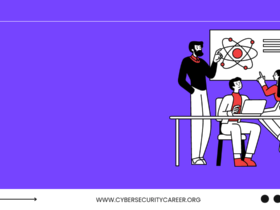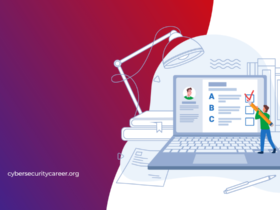In today’s digitally-driven world, cyber attacks are becoming more frequent and sophisticated than ever before. They strike when you least expect it, causing massive disruptions to businesses, governments, and individuals alike. With the rise of remote work and online shopping due to the COVID-19 pandemic, cybercriminals have exploited vulnerabilities in our systems. But just how many cyber security attacks happen every day? In this blog post, we will delve into the frequency of these attacks, their various types and consequences as well as tips on how to protect yourself from them. So buckle up for an insightful ride!
The frequency of cyber attacks
Cyber attacks have become a frequent occurrence in the digital world. In fact, according to a report by Risk Based Security, there were over 36 billion records exposed in data breaches just in the first half of 2021 alone. This staggering number represents an increase of nearly 500% compared to the same period last year.
The frequency and severity of these attacks are increasing rapidly due to several factors such as advancements in technology, increased connectivity and dependence on online platforms for both business and personal use. Cyber criminals are becoming more sophisticated with their techniques, making it harder for security professionals to detect and prevent them.
Moreover, cyber attacks do not discriminate based on location or industry type – every company is vulnerable regardless of its size or sector. Small businesses may feel they are less susceptible than larger corporations but statistics show that small businesses make up over 50% of all cyber attack victims.
It’s important that individuals and companies take proactive measures towards cybersecurity such as keeping software updated regularly, using strong passwords and multi-factor authentication methods. By doing so we can help reduce the frequency and impact of cyber attacks on our personal lives and businesses alike.
The types of cyber attacks
The types of cyber attacks are many and varied, with new techniques being developed all the time. One type is phishing, where attackers use emails or messages to trick people into giving away sensitive information such as passwords or credit card details.
Another type is malware, which can infect computers and other devices through downloads or email attachments. Once installed, it can give attackers access to personal data and even take control of the device itself.
Ransomware is a particularly insidious form of malware that encrypts files on a victim’s computer until they pay a ransom to get them back. This has become increasingly common in recent years, affecting both individuals and businesses.
Distributed denial-of-service (DDoS) attacks involve overwhelming a website or network with traffic until it crashes. These attacks can be carried out using botnets – networks of compromised devices under an attacker’s control.
There are also insider threats – employees who misuse their access to company systems for personal gain or sabotage purposes. These may include stealing confidential data or disrupting essential services from within an organization.
The consequences of cyber attacks
The consequences of cyber attacks can be devastating for individuals, businesses and even governments. One major consequence is the loss of data. Cybercriminals often steal personal information such as credit card numbers, social security numbers and other sensitive data that can be used for identity theft or financial fraud. This can result in enormous financial losses for victims.
Another consequence is the damage to a company’s reputation. A successful cyber attack on a business can cause customers to lose trust in the company’s ability to protect their information, which could lead to decreased sales and revenue.
In some cases, cyber attacks have led to physical harm or loss of life. For example, if a hospital’s computer system is hacked and patient records are compromised or medical equipment malfunctions due to a cyber attack, patients’ lives could be put at risk.
Cyber attacks also have significant economic impacts on countries around the world. The cost of dealing with these attacks continues to rise each year as more sophisticated methods are developed by hackers.
It is clear that the consequences of cyber attacks are far-reaching and potentially catastrophic for individuals and organizations alike. It is essential that everyone takes steps to protect themselves from these threats in order to maintain safety online.
How to protect yourself from cyber attacks
With the increasing frequency of cyber attacks, it is important to take steps to protect yourself and your sensitive information. Here are some tips on how to do so:
Firstly, make sure all of your devices have strong passwords that are not easy to guess or hack. This includes both your computer and mobile devices.
Secondly, be cautious when clicking on links or downloading attachments from unknown sources. These could contain malware which can infect your device and steal sensitive information.
Thirdly, consider using a reputable antivirus program which can help detect and prevent cyber attacks before they happen.
Fourthly, keep all of your software up-to-date with the latest security updates. This helps fix any vulnerabilities in the system that hackers may try to exploit.
Be mindful of what you share online – don’t give away too much personal information such as your address or phone number on public forums or social media sites.
By following these simple steps, you can greatly reduce the risk of falling victim to a cyber attack. Stay safe online!
Conclusion
In today’s digital age, cyber attacks have become a common occurrence, and their frequency is on the rise. From phishing scams to malware attacks, hackers are constantly finding new ways to breach cybersecurity defenses and steal sensitive information.
It is essential to take proactive measures to protect yourself from these attacks. By staying informed about the latest cybersecurity threats and implementing security best practices like using strong passwords and regularly updating your software, you can significantly reduce your risk of falling victim to a cyber attack.
Remember that prevention is always better than cure when it comes to cybersecurity. Don’t wait until you’ve experienced an attack before taking action. Stay vigilant, stay safe!










Leave a Reply